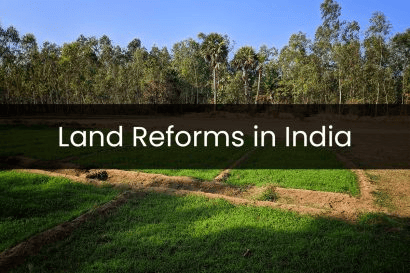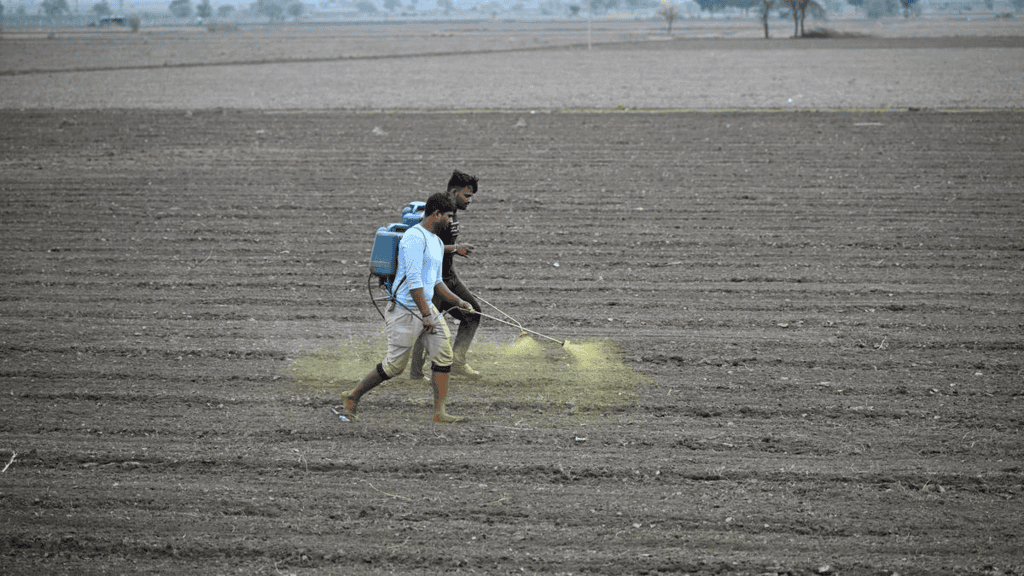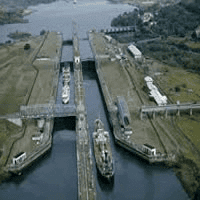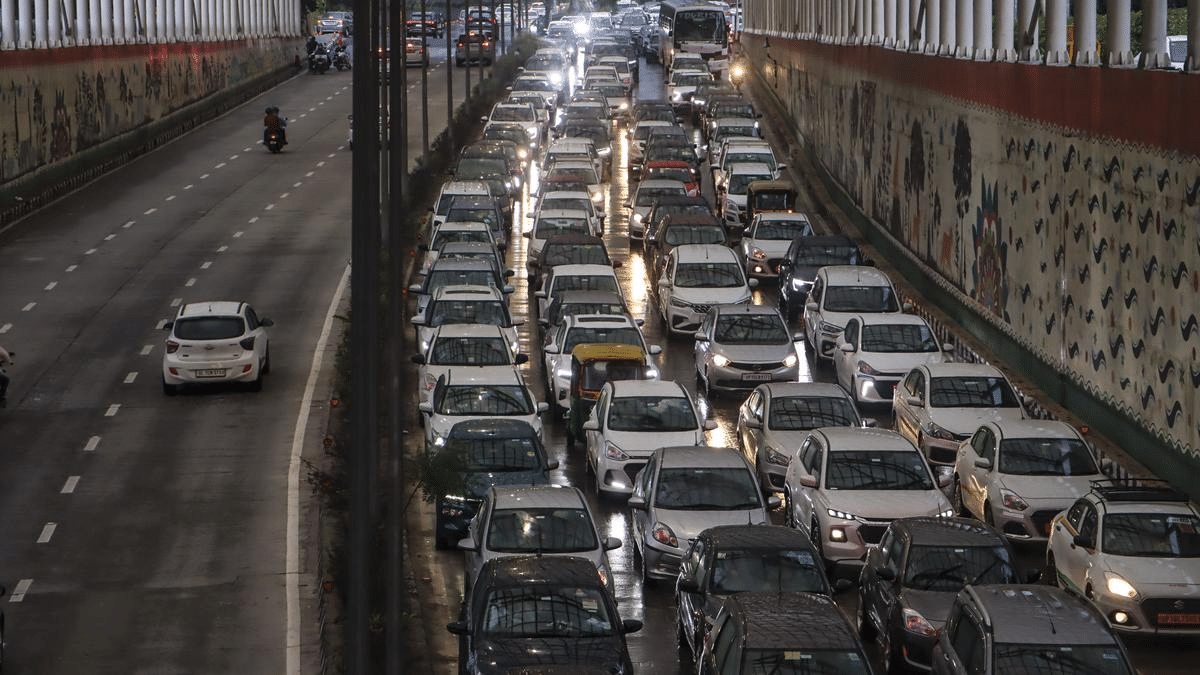UPSC Daily Current Affairs: 16 August 2024 | Current Affairs & Hindu Analysis: Daily, Weekly & Monthly PDF Download
GS3/Enviro & Biodiversity
Corbett Tiger Reserve
Source: Deccan Herald

Why in news?
The Jim Corbett National Park and Tiger Reserve authorities have recently concluded an awareness campaign to celebrate World Elephant Day (August 12).
About Corbett Tiger Reserve
Location:
- Situated in the foothills of the Himalayas in Uttarakhand.
- Spread over Pauri, Nainital, and Almora districts.
Establishment:
- Established in 1936 as Hailey National Park (first National Park of India).
- Renamed Corbett National Park in 1957 in honor of Jim Corbett.
- Total area now extends to 1,288.31 sq. km.
Terrain:
- Several valleys, with rivers Ramganga, Pallaen, Sonanadi flowing through them.
Geographical Features:
- Spread over the Bhabar and lower Shivalik regions.
- Porous tract with boulders and sand deposits, deep water table.
Flora:
- Sal and mixed forests, with grasslands called 'Chaur'.
- Evergreen Sal, Sheesham, and Kanju trees are common.
- Lantana weed is a widespread irritant in the reserve.
Fauna:
- Home to tigers and elephants as key species.
- Also hosts leopards, small carnivores, ungulates like sambar and spotted deer, birds, reptiles (gharials, crocodiles), and fishes.
PYQ:
[2020] Among the following Tiger Reserves, which one has the largest area under "Critical Tiger Habitat"?
(a) Corbett
(b) Ranthambore
(c) Nagarjunasagar- Srisailam
(d) Sunderbans
GS3/Economy
Steps for Implementing Land Reforms in India
Source: The Hindu

Why in news?
The Centre has decided to provide states with Rs 10,000 crore in incentives for implementing land-related reforms in rural and urban areas, and Rs 5,000 crore for creating a Farmers' Registry during the financial year 2024-25 (FY25). The funds will be provided under the Scheme for Special Assistance to States for Capital Investment 2024-25.
Promises Related to the Land Reforms Made in the Union Budget 2024-2025
Land-related reforms in the rural areas:
- Assignment of unique land parcel identification numbers (ULPIN) or Bhu-Aadhaar for all lands
- Digitisation of cadastral maps
- Survey of map subdivisions as per current ownership
- Establishment of land registry, and linking to the farmers registry
Land-related reforms on the urban front:
- Digitisation of land records with GIS mapping
- Establishing an IT-based system for property record administration, updating, and tax administration
Implementation of the Digital Public Infrastructure (DPI) in agriculture
- The Indian government (in partnership with States) will facilitate the implementation of the DPI in agriculture for coverage of farmers and their lands in 3 years.
- This programme will include a "digital survey" of the kharif crop in 400 districts and the land details being brought into a.
Significance of Actions on Reforms around Land
- It points towards a recognition that States are the key actors on these issues, and that approaches and constraints can vary across States. Recognizes importance of States as key actors.
- Overall better land registries and cadastral maps are key to understanding land-use around the country, to enforce building codes, and to evaluate the risks due to various hazards, including natural disasters. Emphasizes the importance of improved land registries and maps.
Challenges Towards Implementing Actions on Land Reforms
- India has been trying to develop such land maps since the 1980s, with limited success.
- One particular pitfall has been a lack of standards.
- These maps have been made by manual digitisation and are not properly georeferenced, i.e. the digital data is not mapped to fixed geographical coordinates.
- The States have used different mapping projections, so maps prepared by one State's processes are not directly compatible with those of another.
- Thus, it is important to develop GIS data standards and interoperability for various end applications first.
Scheme for Special Assistance to States for Capital Investment 2024-25
- In view of a higher multiplier effect of capital expenditure and to provide a boost to capital spending by States, the scheme was announced in the Union Budget 2024-25.
- The scheme (first launched in 2020-21) provides financial assistance to state governments in the form of 50-year interest-free loans for capital investment projects.
- In 2024-25, the scheme was redesigned with an overall allocation of ₹1.30 lakh crore.
GS2/Governance
Reshape the governance structures of AI companies
Source: The Hindu

Why in news?
Recently, corporations embracing stakeholder capitalism are emphasizing products like Generative AI, requiring governance models that balance profit-making with broader social responsibilities, indicating a shift in corporate priorities.
Data Access Issues
1. Dependence on Data for AI Development:
- The progression of AI technologies demands access to extensive data, including personal and sensitive information.
- This reliance raises significant privacy concerns as mishandling this data can lead to privacy rights violations.
2. Regulatory Scrutiny:
- Companies such as Meta have encountered regulatory challenges related to data usage for AI training.
- For instance, Meta was required to halt its plans to train large language models using public content from Facebook and Instagram due to concerns raised by regulators, highlighting the tension between data access and compliance with privacy laws.
3. Algorithmic Bias:
- AI systems can perpetuate existing biases present in the data they are trained on, resulting in discriminatory outcomes.
- For example, Amazon discontinued a recruiting algorithm that exhibited gender bias.
Conflict Between Purpose and Profit
1. Conflict Between Purpose and Profit:
- Many companies, like OpenAI, initially adopted governance structures aimed at public benefit but encountered challenges when profit motives conflicted with their social objectives.
- The dismissal of CEO Sam Altman over concerns of prioritizing commercialization over user safety exemplifies this conflict.
2. Shareholder Primacy:
- Despite alternative governance models being adopted, the underlying shareholder primacy often prevails.
- The pressure to generate profits can overshadow the intended social benefits, making public good secondary to financial gains.
3. Corporate Governance issue:
- Governance issues faced by OpenAI, especially the internal conflict leading to Altman's firing, raise questions about the effectiveness of public benefit corporate structures in balancing profit and purpose.
- This is especially pertinent in tech companies reliant on investor capital.
4. Potential Shift to For-Profit Structures:
- Rumors about OpenAI contemplating a transition to a for-profit governance model indicate a trend where companies may abandon their social objectives in favor of profit maximization.
Workable Strategy (Way forward)
- Framing Ethical Standards: Developing comprehensive ethical guidelines for AI product companies is crucial to ensure responsible and equitable development of AI technologies.
- Incentivizing Public Benefit Objectives: Corporations should be incentivized to adopt public benefit purposes aligning with their business strategies, potentially involving financial incentives for companies demonstrating long-term profit gains from socially responsible practices.
- Reducing Compliance Costs: To promote adherence to public benefit objectives, it is essential to lower compliance costs associated with implementing ethical practices.
Mains PYQ
The emergence of the Fourth Industrial Revolution (Digital Revolution) has initiated e-Governance as an integral part of government. Discuss. (UPSC IAS/2020)
GS3/Science and Technology
WHO declares monkeypox a public health emergency of global concern
Source: Indian Express

Why in news?
The World Health Organization (WHO) has declared monkeypox a public health emergency of global concern, with a notable impact on the Democratic Republic of the Congo and other African nations. Since 2022, there have been a total of 99,176 reported cases and 208 fatalities across 116 countries. Of particular worry is the emergence of a new strain of the virus that can be transmitted sexually.
World Health Organisation
- Established in 1948, the WHO is a United Nations agency dedicated to global public health, boasting 194 member states.
- Headquartered in Geneva, Switzerland, the organization conducts vaccination campaigns, manages health crises, and aids countries in primary healthcare.
- Funding for the WHO comes from member contributions based on economic status and population, as well as voluntary donations.
India & WHO:
- India joined the WHO in January 1948 and is part of the South East Asia Region within the WHO.
- Dr. Chandra Mani, an Indian, served as the first regional director for South East Asia from 1948 to 1968.
- Currently, Dr. Poonam Khetrapal Singh, another Indian, has held the position since 2014.
- Dr. Soumya Swaminathan served as the WHO's chief scientist from 2019 to 2022.
- A PHEIC is declared for an extraordinary event posing a public health risk to other nations through the global spread of disease.
- The WHO's PHEIC declaration aims to prompt a coordinated international response and potentially unlock funding for collaborative efforts in vaccine and treatment sharing.
Monkeypox
- Monkeypox is a rare viral disease of zoonotic origin within the Orthopoxvirus genus of the Poxviridae family, the same family as smallpox.
- Zoonotic diseases are those that transfer from animals to humans.
- Initially discovered in animals in 1958 during outbreaks in research monkey colonies, hence its name 'monkeypox'.
- Treatment options for monkeypox are currently limited, but the Vaccinia vaccine, previously used against smallpox, has shown 85% efficacy in preventing monkeypox.
Concerns and Spread
- A sexually transmissible strain, clade Ib of the monkeypox virus (MPXV), is causing alarm due to its potential for transmission through sexual contact.
- Historically, clade I infections, more severe than clade II, primarily spread through zoonotic events.
- However, sexual transmission of clade I was previously unreported.
- Over 100 cases of clade Ib have surfaced in neighboring countries of the DRC—Burundi, Kenya, Rwanda, and Uganda—where monkeypox was not previously prevalent.
- Recent developments, including a surge in total monkeypox cases to over 15,600 with 537 deaths this year, highlight the urgent need for an international response.
- WHO Director-General Dr. Tedros stressed the importance of controlling these outbreaks, as the virus is now transmitting between humans and evolving rapidly into new strains.
- The first case of the more contagious clade Ib monkeypox infection outside Africa was reported in Sweden, raising concerns about global spread through travel.
- During the 2022 outbreak,India reported 27 cases and one fatality, primarily from the less severe clade II, initially linked to international travel but later spreading locally.
- Experts underscore the global emergency posed by the current spike in monkeypox cases in Africa and the spread of a new sexually transmissible strain.
GS3/Science and Technology
New AI platform will Help Farmers and Scientists
Source: The Hindu

Why in news?
The Union Government launched the AI-based National Pest Surveillance System (NPSS) that will help farmers to connect with agriculture scientists and experts on controlling pests using their phone.
About NPSS (Objective, Structure, Working, Proposed Outcome, etc.)
- On August 15, the Indian Government launched the National Pest Surveillance System (NPSS), an AI-based platform designed to help farmers connect with agricultural scientists and experts to manage pest control.
- This initiative aims to reduce farmers' reliance on pesticide retailers and promote a scientific approach to pest management.
Key aspects of the NPSS include
- Use of AI tools to analyse pest data for effective control and management.
- Enabling farmers to capture and send images of infested crops or pests to experts via the platform for accurate diagnosis and treatment.
- Enhancing the connection between scientists and approximately 14 crore farmers across the country.
- The system will benefit farmers by providing timely information on pest attacks, thereby increasing productivity and conserving soil health.
- It requires no additional funding and will be implemented at the state level through outreach programs.
Structure of NPSS:
- A National System of Pest Surveillance to provide easy and timely access to expert support for pest identification and pest surveillance-based pest management advice to farmers of the country.
- This will not only assist in avoidance of pest epidemics but will also help in minimizing the crop loss due to pests with the real data submission by Government, resources, & lead farmers.
- Moreover, a repository of national pest scenario will also be available to various public agencies, working in the field of plant protection to identify the pest hotspots and thus to formulate plant protection policies.
GS3/Environment
Why climate change poses an existential threat to Panama Canal?
Source: Indian Express

Why in News?
The Panama Canal, which links the Atlantic and Pacific Oceans through the Isthmus of Panama, opened to ships 110 years ago. Now, it is facing a serious threat to its existence.
System of Water Elevators
- The Panama Canal utilizes a sophisticated lock system that functions as water elevators, allowing ships to navigate the elevation difference between the Atlantic and Pacific Oceans.
- This system is essential because the two oceans are at different elevations, with the Pacific being slightly higher.
Operation of the Locks
Ship Enters:
- A ship approaches the first lock chamber, which is at sea level.
- The gate opens to allow the ship into the chamber and then closes behind it.
Water Level Adjustment:
- The valve between the first and second chamber (at a higher elevation) is opened, allowing water to flow into the first chamber from the adjacent higher chamber.
- This increases the water level in the first chamber.
Transition:
- Once the water levels between the two chambers are equalized, the gate between them opens, allowing the ship to move into the next chamber. This process is repeated until the ship reaches the desired elevation of 85 feet at Gatun Lake.
Lowering:
- The reverse process occurs when lowering ships back to sea level at the other end of the canal.
Threat of Climate Change
- Recent droughts have led to significantly lower water levels in the canal because droughts were exacerbated by climate change and the El Niño phenomenon, which have led to significantly reduced water levels in the lake.
- In 2023, rainfall was 43% lower than average, making it one of the driest years on record for the region, which reduced the number of ships able to transit the canal.
- In December, traffic dropped to as low as 22 ships per day, highlighting the vulnerability of the canal to climatic variations.
Contentious Solution
- Proposed Dam: A $1.6 billion project aims to create an additional water source for the canal on the Rio Indio, potentially securing water availability for the next 50 years.
- Displacement Issues: The dam would flood the homes of approximately 2,000 residents, predominantly from lower socio-economic backgrounds, forcing them to relocate and lose their livelihoods. This raises significant ethical concerns regarding the balance between infrastructure needs and the rights of affected communities.
Conclusion
- Before proceeding with the Rio Indio dam project, engage in thorough consultations with the affected communities, ensuring their voices are heard in the decision-making process. Need to develop a fair compensation and resettlement plan that prioritizes the socio-economic well-being of displaced residents, offering alternative livelihoods and housing options to minimize the negative impact on vulnerable populations.
Do you know about another elevation-based canal system?
- Kiel Canal (Germany): The Kiel Canal features locks that raise and lower vessels to navigate the elevation differences between the North Sea and the Baltic Sea. It is one of the busiest artificial waterways in the world.
- Welland Canal (Canada): This canal connects Lake Ontario and Lake Erie and includes a series of locks that lift ships approximately 43 meters (141 feet) to bypass Niagara Falls. It is an essential part of the Great Lakes shipping route.
Trade from Panama Canal
- The Panama Canal moves roughly $270 billion worth of cargo annually, which is the trade route taken by 40% of all U.S. container traffic alone. It handles about 5% of all global maritime trade.
Mains PYQ
- Mention the significance of straits and isthmus in international trade. (UPSC IAS/2022)
GS2/Governance
Jiyo Parsi Scheme
Source: PIB

Why in news?
The Minister for Minority Affairs has launched a dedicated portal for Jiyo Parsi Scheme.
What is the Jiyo Parsi Scheme?
- Central Sector Scheme initiated in 2013-14 by the Ministry of Minority Affairs.
- Aims to counter the declining Parsi population, a minority community in India.
- Focuses on stabilizing and increasing the Parsi population through scientific protocols and interventions.
Features of the Scheme:
- Provides financial support for infertility treatments and related medical care in empanelled hospitals.
- Offers assistance for childcare and support for elderly Parsis.
- Conducts programs to raise awareness and encourage participation within the Parsi community.
Target Groups:
- Married couples of childbearing age needing assistance.
- Youth and adolescents in the Parsi community for disease detection, with parental/legal guardian consent.
Significance of the scheme:
- Facilitated the birth of over 400 Parsi children, preserving cultural heritage and identity.
- Ensures long-term sustainability of the Parsi community in India.
- Demonstrates government commitment to supporting minority communities and promoting diversity.
GS3/Environment
How can traffic which causes air pollution be controlled?
Source: The Hindu

Why in News?
India is facing a severe air pollution crisis, with 83 of the world's 100 most polluted cities located within its borders. The impact is staggering, leading to 2.1 million deaths and 99% of the population breathing air below WHO standards.
Share of Road Transport in India's CO2 Emissions
Road transport accounts for about 12% of India's total CO2 emissions. Heavy vehicles within this sector significantly contribute to particulate matter (PM2.5) and Nitrogen Oxide (NOx) emissions, which are harmful to human health.
- Heavy vehicles contribute to 60-70% of total vehicular PM emissions and 40-50% of total NOx emissions in urban areas.
Challenges with Vehicular Scrapping Policy
The vehicular scrapping policy, aimed at reducing pollution, has faced challenges in states like Karnataka and Maharashtra. Key issues include:
- Insufficient Scrapping Facilities: Limited registered vehicle scrapping facilities unable to handle the volume of vehicles eligible for scrapping.
- Voluntary Compliance: Low engagement from vehicle owners due to the policy's voluntary nature.
- Lack of Awareness and Incentives: Public unawareness about benefits and inadequate incentives for scrapping old vehicles.
- Bureaucratic Delays: Implementation hurdles due to bureaucratic inefficiencies and slow processes.
Steps Taken for Control
The Bureau of Energy Efficiency (BEE) has implemented measures to enhance fuel efficiency and reduce emissions in the transport sector:
- Introduction of CAFE Norms: Proposing CAFE III and CAFE IV norms to set stringent carbon emission targets for passenger vehicles.
- Transition to WLTP Testing: Commitment to shift to the World Light Duty Vehicle Testing Procedure for accurate measurement of fuel consumption and emissions.
- Penalties for Non-Compliance: Outlining financial penalties for manufacturers failing to meet fuel efficiency standards.
Way Forward
To address these challenges, it is crucial to:
- Enhance Infrastructure and Accessibility: Increase the number of registered vehicle scrapping facilities to make the process more accessible.
- Strengthen Policy Enforcement and Incentives: Transition to mandatory compliance for scrapping old vehicles, supported by awareness campaigns on environmental and financial benefits.
Mains PYQ
Mumbai, Delhi, and Kolkata are three major cities in India, but Delhi faces a more severe air pollution problem compared to the other two. This is primarily due to factors like vehicular emissions, industrial activities, and geographical conditions, emphasizing the need for stringent pollution control measures.
GS3/Economy
PM's speech on 78th Independence Day
Source: The Hindu

Why in news?
Prime Minister Narendra Modi, in his speech from the ramparts of the Red Fort on the occasion of the 78th Independence Day, outlined a roadmap for the nation's future.
Key highlights of PM Modi’s speech
- On Viksit Bharat
- The vision for a developed Bharat by 2047 relies on the collective effort of 140 crore citizens.
- The objective is to create a ‘Viksit Bharat’ by embracing modernization, innovation, and technology across various sectors.
- An important aspect is reducing government interference in citizens' lives.
- Mandating at least two annual reforms in each of the 3 lakh institutions nationwide could lead to 25-30 lakh reforms yearly.
- This initiative aims to enhance public confidence and drive progress towards a 'Swarnim Bharat' by 2047.
- On defense
- India is progressing towards self-reliance in the defense sector, transforming into an exporter and manufacturer of various Defense Equipment.
- On the financial sector and economy
- India has effectively doubled per capita income and made significant strides in employment and self-employment.
- Reforms in the banking sector have fortified banks, making them vital pillars of support for the underprivileged, middle-class families, and MSMEs.
- Despite the global COVID-19 pandemic, India has rapidly improved its economy with a focus on modern infrastructure and Ease of Living to propel economic growth.
- The goal is to elevate India to the position of the third-largest economy, with a commitment to work diligently to realize the nation's aspirations at an accelerated pace.
- All elected representatives are urged to ensure Ease of Living on a mission mode.
- On farmers
- To bolster global nutrition and support small farmers in India.
- India and its farmers have the potential to create a worldwide food basket of organic produce.
- Revived and replenished 60,000 ‘Amrit Sarovars’ (ponds).
- On world affairs
- The organization of the G-20 was unprecedentedly grand.
- India has the capacity to host major international events, showcasing unparalleled hospitality.
- India advocates for peaceful coexistence with neighboring countries.
- Bharat desires the safety of Hindus and minorities in Bangladesh, emphasizing peaceful relations.
- On empowerment and development
- Reforms aimed at uplifting the underprivileged, middle class, urban population, and youth by empowering them and addressing their aspirations.
- Inclusive initiatives such as Indian sign language and support for the transgender community ensure equality and dignity for all.
- The ‘Trividh Marg’ signifies a commitment to uplift neglected regions and marginalized communities.
- On education
- Introduction of 75,000 new seats in the medical sector in the next 5 years.
- Revival of the spirit of ancient Nalanda University to position India as a global education hub.
- Efforts to develop an education system that retains Indian talent and attracts international students.
- Establishment of the National Research Foundation to bolster research and innovation.
- On women safety and empowerment
- Increased participation of women in self-help groups, leading to financial empowerment.
- Extension of paid maternity leave and enhanced support for women in leadership roles.
- Funds allocated to women self-help groups to be increased.
- Focus on addressing crimes against women and ensuring swift justice and deterrence.
- On developing industry
- Initiatives like ‘Vocal for Local’ and ‘One District One Product’ for economic development.
- India’s commitment to become a global leader in semiconductor production.
- Embracing ‘Design in India’ and promoting the country’s ancient heritage in manufacturing.
- On railways
- Government’s commitment to make railways a net-zero carbon emitter by 2030.
- On renewable energy
- India’s strides in the renewable energy sector and the goal of self-reliance in energy production.
- Introduction of the PM Surya Ghar Free Electricity Scheme.
- Rising demand for electric vehicles.
- On youth affairs and sports
- Initiative to involve 1 lakh youth in politics, aiming to host the 2036 Olympics in India.
- On law and justice
- Advocacy for a secular civil code and the concept of ‘One Nation One Election’.
- Streamlining laws to ensure justice and eliminate legal complexities.
- On housing
- Provision of 4 crore pukka homes for the underprivileged.
- Promised construction of 3 crore new homes to further this national agenda.
GS3/Science and Technology
Indian Astronomers discover new method for Solar Cycle Amplitude Prediction
Source: The Hindu

Why in news?
What is Space Weather?Astronomers from the Indian Institute of Astrophysics (IIA) have developed a new method to predict the amplitude of the upcoming solar cycle. This discovery is based on 100 years of solar data from the IIA’s Kodaikanal Solar Observatory.
- Space weather refers to the varying conditions within the solar system and its heliosphere influenced by the Sun and solar wind.
- The main components of space weather include coronal mass ejections and solar flares.
- These components can compress the Earth’s magnetosphere, triggering geomagnetic storms.
- This can disrupt communication, power transmission, damage spacecraft electronics, and pose threats to astronauts.
- The activity of the Sun follows an approximately 11-year periodic cycle, marked by variations in the number of sunspots on the Sun’s surface.
- Solar cycle influences space weather, Earth’s atmosphere, and climate variations.
- Predicting the amplitude of the solar cycle is a major challenge in astrophysics, as it directly affects related phenomena and space weather.
- IIA researchers discovered that the width of supergranular cells on the solar surface during the minimum year of the solar cycle correlated with the number of sunspots observed during the subsequent solar cycle maximum.
- This simple method can be used to predict the strength of the upcoming solar cycle, which is valuable for space weather forecasting.
- Supergranular Cells are large convective cells on the Sun’s surface, with diameters of about 30,000 km.
- These cells are part of the solar convection zone where hot plasma rises, cools as it reaches the surface, and then sinks back down - a continuous cycle.
- Characteristics:
- Supergranular cells are larger than granules, another type of convective cell on the Sun.
- Its borders, known as supergranular lanes, are about 5,000 km thick.
- Plasma within these cells moves from the center of the cell toward the edges, where it sinks back into the Sun’s interior, creating a network of lanes on the solar surface.
- Associated with the magnetic field concentrations on the Sun’s surface, often where sunspots and other magnetic features appear.
|
59 videos|5398 docs|1143 tests
|
















